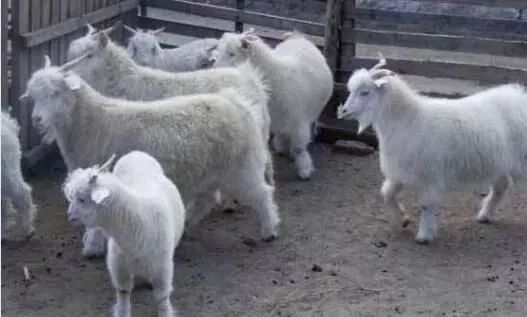
- Online pavilions:
- Veterinary medicines
- Veterinary raw materials
- Other
- Asia
- America
- medical instruments

News briefing: characterized by thick nasal fluid, sneezing, and nose throwing caused by the sheep nose fly maggot. The disease is mainly in spring, summer and autumn. Frequent in seasons. Treatment method: Prescription 1: Afodine 0.25 mg/kg body weight is taken orally.
Introduction: Prevention and treatment of 11 common diseases of sheep raising 11 common diseases that sheep are easy to get, sheep raising is a long-standing animal husbandry breed in our country, and the sheep raising industry in our country can be traced back to a long time ago. There are not many diseases in traditional grazing in our country, but the current scale of raising sheep and increasing the density of raising sheep have increased the incidence of sheep. Among them, there are 11 common diseases in sheep raising, which are our sheep farmers, and sheep farms need to pay attention Yes, it is necessary to understand the onset process, epidemiological history, treatment methods, etc. The following editor of 365 Yangyang.com will share with you the dry and thin sheep disease. The disease is mainly characterized by the increasing weight loss of sheep and the lack of fat after eating only forage. Treatment method: 20 ml/kg body weight of anti-peritoneal allergy, 0.4 calcium tablets/kg body weight, 0.4 cod liver oil/kg body weight, 0.4 multivitamin B tablets/kg body weight, once a day for 5 days. At the same time, it is necessary to strengthen feeding management, appropriately increase the feeding amount of concentrated feed, and provide sufficient and clean drinking water. Sheep colds Sheep colds often occur in early spring and early autumn when the weather is changeable. The disease is characterized by increased body temperature, malaise, and sudden inability to eat. Treatment method: Penicillin 40,000 IU/kg body weight, and Antongding 0.4 ml/kg body weight, subcutaneously injected twice a day for 3 days. Sheep diarrhea Sheep diarrhea is the most common disease in sheep. Diarrhea is divided into watery diarrhea and diarrhea, and there are many reasons for it. Treatment method: 1. Watery diarrhea: Prescription 1: Silica Carbon Silver 0.4 tablets/kg body weight, Sulfamidamide 0.4 tablets/kg body weight, twice a day for 2 days. Prescription 2: Gentamicin 16,000 IU/kg body weight, subcutaneous injection, twice a day for 3 days. 2. Diarrhea: Prescription 1: 0.4 tablets of sulfamethamine/kg body weight, and 0.2 tablets of furazolidine/kg body weight, twice a day, for 2 days. Prescription 2: Gentamicin 16,000 IU/kg body weight, 2% futerine 0.8 ml/kg body weight, twice a day for 2 consecutive days. Sheep mouth rotten disease This disease is an infectious disease caused by a macromolecular virus, which is mainly characterized by oral lesions. The infection is rapid, mostly in winter and spring, and is prone to long-distance transportation. The mortality of this disease is extremely low, but it is very harmful. Treatment method: Apply ice boron powder to the affected area twice a day and heal within 2 to 3 days. Sheep pneumonia The disease is mainly characterized by runny nose, cough, and elevated body temperature. Treatment method: Prescription 1: Streptomycin 80,000 IU/kg body weight, Penicillin 80,000 IU/kg body weight, Antongding 0.4 ml/kg body weight, subcutaneous injection. Prescription 2: Kanamycin 60,000 IU/kg body weight, Antongding 0.2 ml/kg body weight, lungs 7-9 intercostal with 16-size human fine needle intrapulmonary injection. Sheep strangulation disease This disease is generally caused by acidosis caused by sheep eating corn, soybeans, sorghum and other concentrates. Treatment: Oral sodium sulfate or intravenous sodium bicarbonate for mild cases; gastric lavage for severe cases. The main feature of the disease is that the afterbirth of the ewe does not fall down. The main feature of the disease is that the afterbirth of the ewe does not fall down. Treatment method: oxytocin 0.6 unit/kg body weight, subcutaneous injection. After 10 minutes, use tweezers to gently pull the aftermath, and the aftermath can be taken off. Sheep heterophagia The main characteristics of sick sheep are eating wool, plastic paper, and soil. Treatment method: 0.4 calcium tablets/kg body weight, 0.4 multivitamin B tablets/kg body weight, 0.4 cod liver oil/kg body weight, twice a day for 3 days. Sheep harmful to the eyes The disease occurs frequently in spring and autumn, is easily contagious, and has little harm. The main symptoms are severe conjunctival congestion, tearing, and eye feces. In severe cases, the eyelids are swollen. Treatment method: Generally, chloramphenicol eye drops are used to drip the eyes, 4 to 5 times a day, and it can be cured in 2 to 3 days. Sheep are not in estrus The disease is mostly caused by genetic or physiological diseases, and the main manifestation is that the sick sheep are still not in estrus after they reach the physiological maturity period. Treatment method: triad hormone .12ml/kg body weight, subcutaneous injection, estrus unfit within 3 days after injection, and estrus after 18 days before breeding. Note: For ewes that are not in heat caused by genetic factors that have been cured for a long time, in order to improve breeding efficiency, they must be eliminated in time. Sheep nose fly Sheep nose fly, commonly known as "nose loss", is a parasitic disease characterized by thick nasal fluid, sneezing, and nose throwing caused by the sheep nose fly maggot. The disease is mainly in spring, summer and autumn. Frequent in seasons. Treatment method: Prescription 1: Afodine 0.25 mg/kg body weight is taken orally. Generally, it can be cured once a time. Prescription 2: Trichlorfon 0.2~0.3% solution nasal drip, 3 times a day for 2 days.